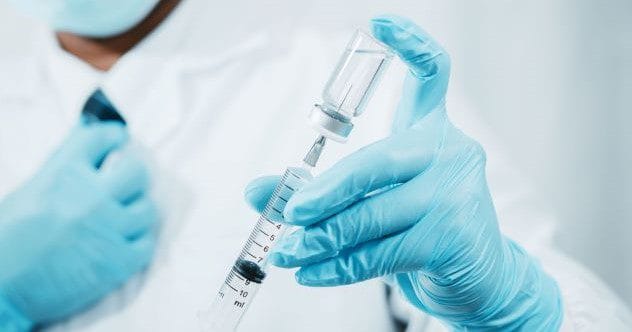We all dream of living in a time where diseases are easily curable, especially those that have caused so much loss. Over the past few years, despite global challenges, there have been incredible medical advancements. Scientists worldwide have been dedicated to finding cures and expanding our understanding of long-standing diseases.
From potential cancer cures and breakthroughs in neurological diseases to successfully transplanting lab-grown body parts, the progress is both extensive and impressive. Artificial intelligence is poised to usher in the next wave of medical wonders. Let’s explore some of these exciting developments!
10 Neurodegenerative Diseases Could Be Controllable

Halberd Corporation in Pennsylvania achieved a significant breakthrough in February 2022 in treating neurodegenerative diseases. They demonstrated that removing glutamate from cerebral spinal fluid could control disease-associated antigens from the top ten diseases in this field. This discovery could positively impact conditions like PTSD, traumatic brain injury, chronic traumatic encephalopathy, Alzheimer’s disease, Parkinson’s disease, epilepsy, and other neurodegenerative disorders.
These scientific techniques aim to promote healthy brain function. William A. Hartman, Halberd’s Chairman, President, and CEO, stated, “This breakthrough will give hope to the 36 million Americans annually, and the millions more around the world, suffering from some form of neurodegenerative diseases.”
9 Potential Cure for Stage IV Melanoma Cancer
In April 2020, Australian scientists at the Melanoma Institute made strides in reducing deaths from stage 4 melanoma. Patients with stage 4 melanoma often face a grim prognosis of six to nine months. However, immunotherapy treatment at the Melanoma Institute has resulted in 50% of patients living long enough to be considered cured. Immunotherapy harnesses the patient’s immune system to combat the cancer.
In Australia, melanoma causes over 1,700 deaths annually. The immunotherapy focuses on drugs like Keytruda, Opdivo, and Yervoy. Scientists are now researching why 50% of patients do not respond to immunotherapy and whether this treatment can be applied to other cancer types.
8 TETA Treatment: A Possible Cure for Children’s Cancer
Tests on mice at the Children’s Cancer Institute in New South Wales, Australia, have shown that TETA treatment can shrink tumors by 40%. This has doubled the expected lifespan of the mice, using an affordable medication already approved for human consumption to treat Wilson’s disease.
Wilson’s disease leads to copper buildup in the liver. Dr. Vittorio’s findings suggest this treatment could also be successful for other cancers like breast, pancreatic, and lung cancer. Neuroblastoma, responsible for 15% of childhood cancer deaths with a 50% survival rate, thrives on built-up copper in the body. Removing the copper allows the immune system to recognize and fight the tumor.
7 Premature Babies with Chronic Lung Disease
The Hobart Method offers a less invasive approach to deliver surfactant to premature babies with chronic lung disease. This involves using a small tube in the windpipe to aid breathing. Developed by Peter Dargaville of the University of Tasmania, the findings were published in December 2021 after years of trials in 33 neonatal units across 11 countries.
The method aims to prevent bronchopulmonary dysplasia, a lung disease that occurs when a newborn’s lungs are underdeveloped in the womb. A follow-up project is assessing the long-term effects of surfactant treatment on these babies.
6 Vaccine for Brain Tumor Boosts Survival Rate by 5 Years
A vaccine for brain tumor patients has been found to double the five-year survival rate, representing a significant advancement. King’s College Hospital in London found that 13% of vaccinated patients were still alive after five years, compared to 5.7% in the control group. This marks the first improvement in aggressive glioblastoma research in nearly two decades. Even patients with a poor prognosis experienced prolonged life expectancy.
Immunotherapy helps the body attack and recognize cancer cells. Each patient receives a personalized vaccine created by analyzing their dendritic cells. These cells capture and allow immune cells to destroy the tumor.
After removing dendritic cells, they are mixed with biomarkers from the tumor. When injected back into the patient, they share information with the immune system to attack the tumor. The medical team aims to trial the vaccine with other cancer types and drug combinations.
5 Improved Imaging and Sensing Techniques
Specialist imaging and sensing techniques are making it easier to detect circulatory diseases. Coventry University’s Centre of Intelligent Healthcare is researching neurovascular imaging to create pictures of the body’s smallest blood vessels. This research aims to discover how circulatory systems affect early-stage diseases like diabetes, autoimmune conditions, cancer, and artery aging. By using different light colors, they can observe blood flow, composition, and temperature non-invasively and cost-effectively.
The team hopes to find new ways to treat Reynaud’s phenomenon, where fingers and toes change color when a person is anxious or cold. Reynaud’s phenomenon can indicate more serious problems affecting internal organs.
4 Specially Designed Dressings for Hidradenitis Suppurativa
Suzanne Moloney, a former chef and the founder of HidraMed Solutions, has developed special dressings to manage the symptoms of hidradenitis suppurativa (HS). Her Irish company won the Irish Times Innovation of the Year Award in 2021 for helping the 4% of the world’s population who suffer from HS. These adhesive-free dressings fit a range of specially designed underwear.
HS causes lesions and abscesses in the armpit, thigh, and groin that need regular dressings that won’t leak or move around. Adhesive dressings can cause more harm in their application and removal, leading to pain and stress. Moloney created fashionable items with discreet pads and fastenings, such as crop tops, tee shirts, and boxers, to combat the social isolation, depression, and anxiety often associated with HS.
3 Successful Transplant of Lab-Grown 3D-Printed Ear
A woman born with microtia underwent a successful 3D-printed “living” ear transplant. This marks the first transplant of its kind, made with human skin cells 3D-printed in a lab. Microtia causes the ear to be underdeveloped or missing at birth. American scientists used existing cells from her ear tissue to create the “bio-ink” for the new ear, reducing the likelihood of rejection.
Without 3D printing, microtia is treated with implants or invasive surgery involving rib cartilage extraction. Dr. Bonilla, the lead physician, expressed his enthusiasm for what this technology could mean for microtia patients and their families.
2 Two Stories of HIV Cures
A woman, cured of HIV after stem cell treatment, became the third person ever cured of AIDS. This case marked the first use of umbilical cord blood, which may make the treatment more accessible. Treated for leukemia in the marrow, she has been in remission for 14 months without needing antiretroviral therapy.
In another 2022 development, researchers at Tel Aviv University developed a vaccine that can activate the immune system and cure AIDS. By using gene editing to engineer type-B white blood cells, the vaccine stimulates the immune system to produce antibodies that neutralize HIV.
1 British Army Tests Remote Surgery Communication Tech
The British Army is testing technologies that could enable doctors to perform life-saving surgeries on wounded soldiers thousands of miles away using augmented reality glasses. “Project Lara” aims to provide junior medics with specialist advice when they need it most. In typical battle circumstances, junior medics work closer to the front lines with limited communication.
A specialist can wear Microsoft HoloLens 2 augmented reality glasses to guide a medic in the field during routine tasks, monitor the surgery, and offer help and instruction as needed. This ensures junior medics have the necessary information and specialist support even in dangerous environments.
These medical innovations showcase significant progress in treating and curing diseases. The ongoing research and dedication of scientists worldwide offer hope for even more breakthroughs in the future. Share your thoughts on these advancements in the comments below!










